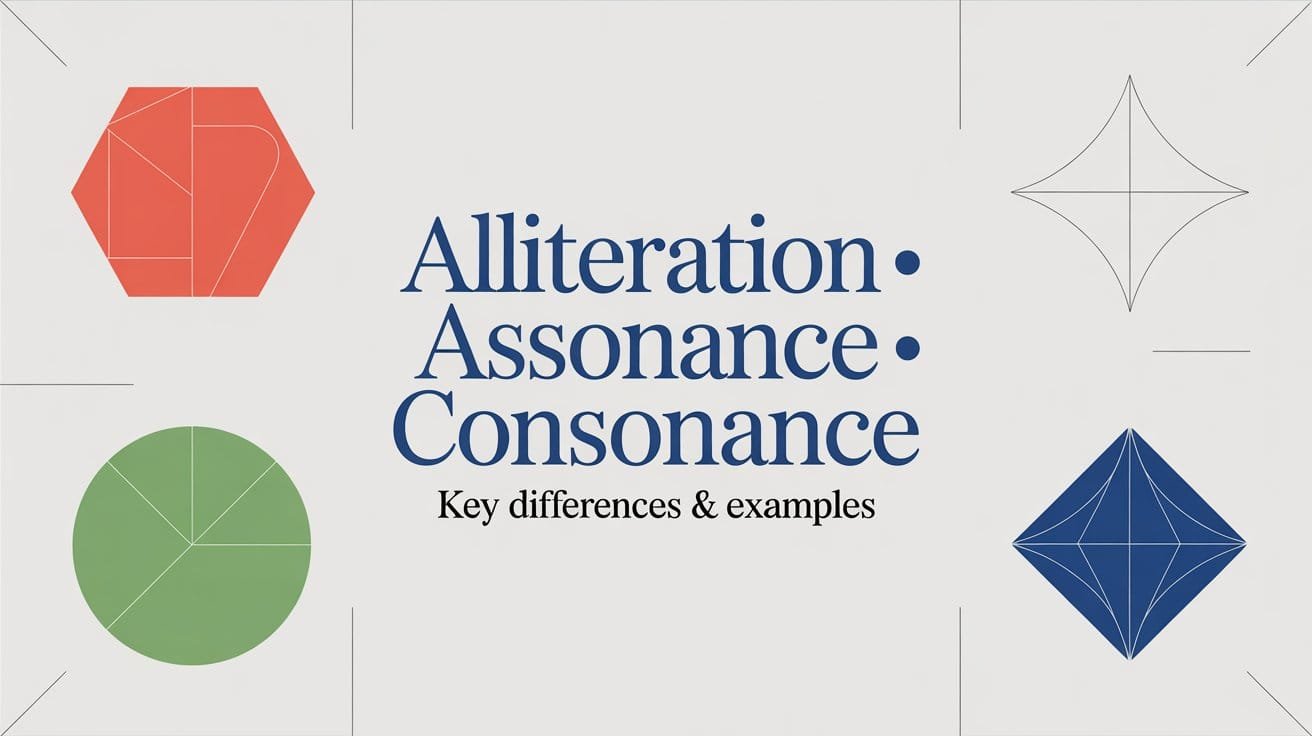Compound modifiers make your writing more specific by combining two or more words to describe one idea. They help you express meaning clearly and efficiently. However, when used without the right punctuation, they can also create confusion.
Take this sentence, for example: a small business owner. At first glance, it could mean the owner is small in size. But what you really mean is someone who owns a small business. To show that the words small and business work together as one description, you add a hyphen: a small-business owner.
That tiny mark changes everything. It connects words that belong together, forming a single, clear modifier. Without it, readers may pause or misinterpret your meaning.
What Is a Compound Modifier?
A compound modifier is a group of two or more words that work together to describe a single noun. You can think of it as one idea made up of multiple parts.
Common Examples of Compound Modifiers:
- a well-known author
- a high-speed train
- a five-year plan
In each case, two words combine to form one clear description. The hyphen connects them so readers understand that well-known, high-speed, and five-year act as single units modifying the nouns that follow.
Compound modifiers can take different forms:
- Adjective + Noun: full-time job, part-time worker
- Adverb + Adjective: well-written article, highly respected leader
- Number + Noun: two-story building, 10-page report
The key idea is that the words work together to modify one noun, forming a single descriptive phrase. Hyphens often make this relationship clear—especially when the modifier appears before the noun.
When to Use a Hyphen in Compound Modifiers
Hyphens are used in compound modifiers to keep meaning clear. When two or more words describe a single noun together, the hyphen connects them into one idea. Without it, readers might misunderstand which words belong together.
Example:
- She adopted a black-and-white cat. → describes a cat with black and white fur.
- She adopted a black and white cat. → could mean she adopted two cats — one black and one white.
That small mark helps readers see exactly how the description works.
Use a Hyphen Before a Noun
When the compound modifier comes before the noun it describes, use a hyphen to link the words.
Examples:
- a well-known artist
- a five-minute break
- a long-term project
Use Hyphens for Clarity in Longer Modifiers
When a description includes three or more words that form one idea, hyphens keep it readable.
Examples:
- a state-of-the-art design
- a once-in-a-lifetime opportunity
- a decision-making process
When Not to Use a Hyphen
In some cases, adding a hyphen makes the sentence look awkward or grammatically incorrect. Here are the main times you should avoid using hyphens in compound modifiers.
When the First Word Ends in –ly
Adverbs ending in –ly already show their connection to the adjective that follows. A hyphen isn’t needed—and adding one is incorrect.
Examples:
- a highly skilled surgeon
- a perfectly balanced recipe
- a highly-skilled surgeon ❌
In each correct example, the –ly ending clearly links the two words, so the hyphen is unnecessary.
When the Meaning Is Already Clear
If the phrase is easy to understand without a hyphen, you don’t need one.
Examples:
- public health service
- elementary school teacher
Even though these are multi-word descriptions, their meaning is familiar and doesn’t rely on punctuation for clarity.
When the Modifier Comes After the Noun
Compound modifiers usually lose their hyphen when they appear after the noun they describe.
Examples:
- The rules are well established.
- The artist is well known.
- The project is long term.
- The break lasted five minutes.
The words still work together conceptually, but grammar rules don’t require a hyphen in this position.
When the Modifier Includes a Proper Noun
Proper nouns already stand alone as specific names, so they don’t need hyphens to form compound modifiers.
Examples:
- North American culture
- South African team
- New York restaurant
The capitalized names make the relationships clear without extra punctuation.
Compound Modifiers with Numbers and Fractions
Numbers and fractions often form part of compound modifiers, and in these cases, hyphens help show that the words belong together. The rule depends on where the modifier appears in the sentence and how it functions.
Use Hyphens When the Number Comes Before a Noun
When a number and another word work together to describe a noun, use hyphens to keep the phrase clear.
Examples:
- a 10-year plan
- a two-day workshop
- a 20-page document
Don’t Use Hyphens When the Number Follows the Noun
When the number comes after the noun, it stands alone and doesn’t form a single descriptive phrase — so no hyphen is needed.
Examples:
- The plan is 10 years long.
- The workshop lasted two days.
- The document has 20 pages.
Here, the number modifies the verb or adjective, not the noun directly, so a hyphen isn’t required.
Use Hyphens in Fraction Modifiers
Fractions used as compound adjectives are always hyphenated when they describe a noun.
Examples:
- a two-thirds majority
- a one-half portion
- a three-quarter sleeve
But if the fraction acts as a noun, no hyphen is needed.
Examples:
- Two thirds of the class passed the test.
- One half of the pizza is gone.
Hyphenate Ranges Used as Modifiers
When showing ranges that function as modifiers, use hyphens to make them clear.
Examples:
- a 5–10-minute exercise
- a 40–50-page thesis
If you write the range as a standalone phrase (not modifying a noun), no hyphen is necessary: The exercise lasts 5 to 10 minutes.
Compound Modifiers with Prefixes and Colors
Some compound modifiers use prefixes or color combinations. In these cases, hyphenation helps maintain clarity and prevent misreading. The rules are straightforward once you know when to apply them.
Compound Modifiers with Prefixes
A prefix is a short element (like re-, pre-, ex-, self-, all-) added before a word to change its meaning. Most prefixes don’t need a hyphen, but there are important exceptions.
Use a hyphen when:
- The prefix comes before a proper noun.
- The word would be confusing or awkward without one.
- The prefix ends in a vowel and the base word begins with the same vowel.
Examples:
- ex-President Carter (before a proper noun)
- re-cover (to cover again) vs. recover (to get better)
- re-enter (to avoid the double “e”)
- self-aware leader
- all-inclusive resort
No hyphen needed: redo, preview, cooperate, subway, semifinal
In modern English, many formerly hyphenated prefixes have become closed compounds as they gained common use.
Compound Modifiers with Colors
When two colors combine to describe a single shade or idea, use a hyphen.
Examples:
- a blue-green dress
- a reddish-brown table
- a black-and-white photograph
The hyphen shows that the colors blend together rather than describe two separate features.
But if the colors describe different elements, no hyphen is needed: She wore a black skirt and white blouse.
Open and Closed Compounds
Not all compound words need hyphens. Some are written as separate words, while others are joined together completely. These are known as open and closed compounds.
Open Compounds
Open compounds are written as separate words but function together as one idea. They’re common in everyday English, especially when the meaning is already clear without a hyphen.
Examples:
- high school teacher
- real estate agent
- post office clerk
Readers easily understand that these pairs form a single concept, so punctuation isn’t needed.
Closed Compounds
Closed compounds are written as one word. Over time, many open or hyphenated forms evolve into closed compounds as they become familiar in everyday use.
Examples:
bookstore
housekeeper
notebook
Language naturally changes—words that start as two separate terms often merge as they become more commonly used (for instance, email was once e-mail).
Quick Reference Table
| Type | Example | Notes |
|---|---|---|
| Open Compound | ice cream shop | Separate words that act as one idea |
| Closed Compound | classroom | Combined into a single word over time |
Some Compounds Are Always Hyphenated (Even After the Noun)
While most compound modifiers lose the hyphen when they come after the noun, some expressions remain hyphenated in every position. These are fixed phrases that have become standard in English. They’re often idiomatic and function almost like single words.
These compounds stay hyphenated because they’re widely recognized with a hyphen, can be confusing without one, and appear frequently in both formal and informal writing. The hyphen keeps their meaning clear and consistent, whether the phrase appears before or after the noun.
Common Examples That Always Stay Hyphenated
state-of-the-art
- It’s a state-of-the-art facility.
- Their equipment is state-of-the-art.
up-to-date
- We use up-to-date information.
- The database is up-to-date.
long-term
- a long-term strategy
- This plan is long-term.
all-inclusive
- an all-inclusive resort
- The package is all-inclusive.
well-being
- She promotes student well-being.
- Mental well-being is a priority.
part-time / full-time
- a part-time employee
- He works part-time.
high-quality
- These materials are high-quality.
- high-quality materials
These hyphenated phrases are often listed in dictionaries as compound adjectives or nouns, which reinforces their standard hyphenation.
Quick Tips for Using Hyphens Correctly
- Hyphenate when a compound modifier appears before a noun.
(a well-written essay, a two-day trip) - Don’t hyphenate when the modifier comes after the noun.
(The essay is well written.) - Never hyphenate adverbs ending in -ly with the adjectives they modify.
(a highly skilled worker, not a highly-skilled worker) - Hyphenate number-based compounds before a noun and keep the second word singular.
(a 10-year plan, not a 10-years plan) - Keep certain expressions always hyphenated, such as well-known or up-to-date. Check a reliable dictionary if you’re unsure.
FAQs About Compound Modifiers and Hyphenation
What is a compound modifier?
A compound modifier is a group of two or more words that work together to describe a single noun. Example: a high-speed train, a five-year plan, a well-written report.
When should I use a hyphen in a compound modifier?
Use a hyphen when the modifier comes before the noun and the words combine to describe one idea.
Do I need a hyphen when the modifier comes after the noun?
Usually, no. When the phrase follows the noun, the hyphen is dropped. Example: The document is ten pages long.
Are all compound modifiers hyphenated?
No. Some are never hyphenated (like those with -ly adverbs), and others—like certain fixed expressions—are always hyphenated even after the noun. It’s helpful to check a dictionary if you’re unsure.
Are some compound modifiers always hyphenated?
Yes. Certain fixed expressions are always hyphenated, even after the noun.
For example, state-of-the-art, up-to-date.



